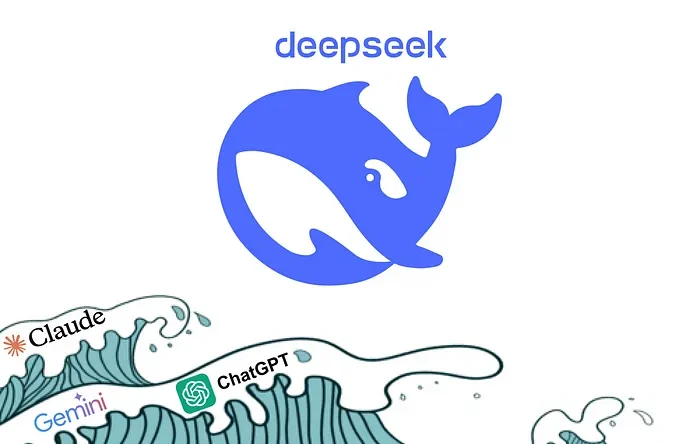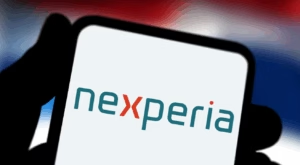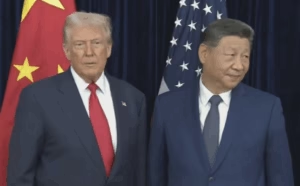A Chinese startup, DeepSeek, has ignited intense global attention and anxiety after its artificial intelligence chatbot surged to the top of Apple’s free app charts on Monday. The company’s rapid ascent has not only shaken stock markets but also triggered a broader discussion about the economic and geopolitical implications of China’s advances in generative AI.
Founded in 2023 and headquartered in Hangzhou, DeepSeek is led by Chief Executive Officer Liang Wenfeng, a former co-founder of High-Flyer, one of China’s most successful hedge funds focused on AI-driven quantitative trading. The company released its first large language model the same year, but its most recent developments have brought it squarely into the spotlight.
“The models they built are fantastic, but they aren’t miracles either,”
said Stacy Rasgon, a semiconductor analyst at Bernstein, commenting on what he viewed as an overreaction from financial markets.
“They’re not using any innovations that are unknown or secret or anything like that. These are things that everybody’s experimenting with.”
What is DeepSeek?
What makes DeepSeek particularly noteworthy is not just the sophistication of its AI models, but their affordability. Unlike U.S. tech giants pouring billions into high-end data centres and elite chips, DeepSeek has managed to build advanced models using Nvidia’s H800 graphics processing units — a less powerful alternative to the A100 chips previously used by the startup. The H800 units are not restricted under current U.S. export rules, making them legally accessible to Chinese firms.
This relatively lean approach to building powerful AI tools has prompted many in the industry to question the necessity of the astronomical investments planned by American companies such as OpenAI, Oracle, and SoftBank, whose collective AI initiatives may surpass $500 billion.
“What their economics look like, I have no idea,”
said Rasgon.
“But I think the price points freaked people out.”
Is DeepSeek better?
The catalyst for the current frenzy was not the app itself but a research paper published last week, detailing a model named R1. DeepSeek claims R1 exhibits advanced reasoning capabilities — including the ability to reconsider its methods for solving mathematical problems — at a significantly lower cost than OpenAI’s comparable model, o1.
R1 is also open source, meaning developers worldwide can access and modify key components of the model, although DeepSeek has not disclosed the dataset used for its training. This transparency has further broadened its appeal within AI research circles.
“It’s just thinking out loud, basically,”
explained Lennart Heim, a researcher at the Rand Corporation. He noted that while similar techniques, such as “Test Time Scaling,” have been seen in models developed by OpenAI and other U.S. companies, DeepSeek’s open-source approach and rapid development have drawn significant attention.
“It’s the first time that we see a Chinese company being that close within a relatively short time period. I think that’s why a lot of people pay attention to it,”
Heim added.
“I used to believe OpenAI was the leader, the hill’s king, and nobody could catch up. Turns out this is not completely the case.”
Strategic Implications for U.S. Policy
Beyond the technical intrigue, the timing of DeepSeek’s R1 announcement has raised eyebrows in diplomatic and policy-making circles. Analysts say it may have been strategically released to challenge American export controls.
“The technology innovation is real, but the timing of the release is political in nature,”
said Gregory Allen, director at the Wadhwani AI Center under the Center for Strategic and International Studies. He compared the event to Chinese telecommunications giant Huawei’s launch of a new smartphone in 2023, just as export restrictions were under review by the Biden administration.
“Trying to show that the export controls are futile or counterproductive is a really important goal of Chinese foreign policy right now,”
Allen added.
This has cast doubt over whether the U.S. strategy of curtailing semiconductor exports to China will have the intended effect. With DeepSeek demonstrating competitive results without access to the most advanced chips, some analysts question the long-term viability of the current policy framework.
Trump’s Response and Political Ramifications
Former U.S. President Donald Trump, speaking on Monday to House Republicans in Miami, framed the development as both an economic and industrial wake-up call.
“DeepSeek’s breakthrough was good because you don’t have to spend this much money,”
Trump said. He continued,
“You won’t be spending as much and you’ll get the same result.”
He described the development as
“a wakeup call for our industries that we need to be laser focused on competing to win.”
On his first day back in office last week, Trump signed an executive order to
“identify and eliminate loopholes in existing export controls,”
indicating his administration’s intention to uphold and possibly intensify the Biden-era restrictions on AI-related technology exports.
Meanwhile, U.S. chipmaker Nvidia, whose stock fell by 17 percent on Monday amid the market upheaval, acknowledged DeepSeek’s accomplishment in a carefully worded statement. The company referred to it as
“an excellent AI advancement”
that made use of
“widely-available models and compute that is fully export control compliant.”
For many observers, the rise of DeepSeek evokes Cold War echoes, most notably the Soviet Union’s launch of the Sputnik satellite in 1957, which jolted the United States into action and inaugurated the space race.
“DeepSeek R1 is AI’s Sputnik moment,”
venture capitalist Marc Andreessen wrote on the social media platform X on Sunday. Andreessen, a vocal critic of what he sees as regulatory overreach in the U.S., has warned that excessive government interference could hamper American innovation while allowing nations like China to surge ahead.
















